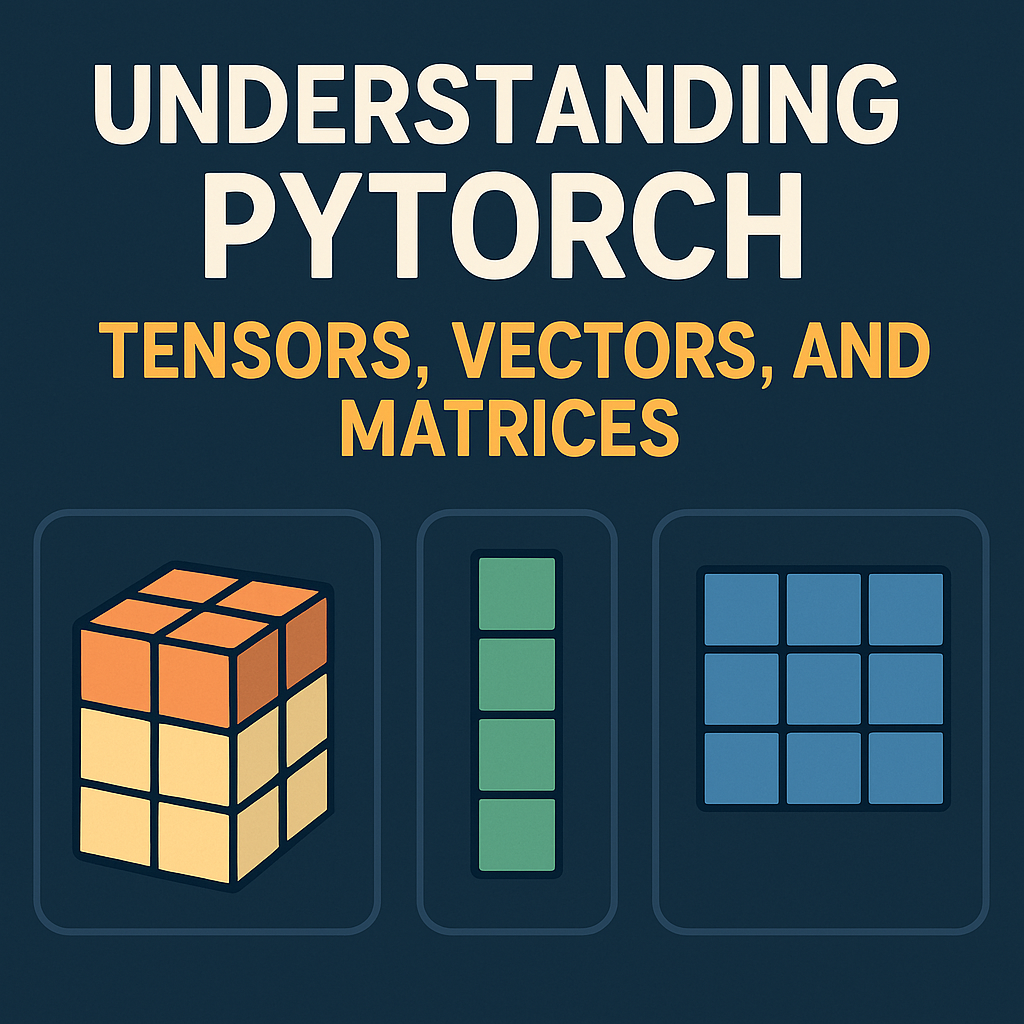Contents
hide
Understanding PyTorch: Tensors, Vectors, and Matrices
By: Bindeshwar Singh Kushwaha
Institute: PostNetwork Academy
What is PyTorch?
- PyTorch is an open-source deep learning framework.
- It supports dynamic computation graphs.
- Designed to be Pythonic and flexible.
- Commonly used for research and production in AI/ML.
Types of Tensors
- A scalar is a 0-dimensional tensor.
- A vector is a 1-dimensional tensor.
- A matrix is a 2-dimensional tensor.
- Tensors can be of higher dimensions (3D, 4D, …).
import torch
s = torch.tensor(5) # Scalar
v = torch.tensor([1.0, 2.0, 3.0]) # Vector
m = torch.tensor([[1, 2], [3, 4]]) # Matrix
print("Scalar:", s)
print("Vector:", v)
print("Matrix:", m)
Creating Tensors
Use torch.tensor(), torch.zeros(), torch.ones(), etc.
You can specify shape, data type, and device.
import torch
a = torch.tensor([1, 2, 3])
b = torch.zeros((2, 3))
c = torch.ones((3, 3), dtype=torch.float32)
print(a)
print(b)
print(c)
Tensor Properties
.shape: shape of the tensor.dtype: data type.device: location (CPU or GPU)
import torch
x = torch.tensor([[1, 2, 3], [4, 5, 6]])
print(x.shape) # torch.Size([2, 3])
print(x.dtype) # torch.int64
print(x.device) # cpu
Arithmetic Operations
- Element-wise operations:
+,-,*,/ - Matrix multiplication:
torch.mm()or@
import torch
a = torch.tensor([[1, 2], [3, 4]])
b = torch.tensor([[5, 6], [7, 8]])
print(a + b) # Addition
print(a * b) # Element-wise multiplication
print(torch.mm(a, b)) # Matrix multiplication
Using GPU
- Use
.to('cuda')or.cuda()to move tensor to GPU. - Check for GPU with
torch.cuda.is_available(). - CUDA = Compute Unified Device Architecture (by NVIDIA)
- Allows general-purpose GPU computing (not just graphics)
import torch
if torch.cuda.is_available():
x = torch.tensor([1.0, 2.0])
x = x.to('cuda')
print(x.device) # Should print "cuda:0"
Automatic Differentiation (Autograd)
- PyTorch tracks operations with
requires_grad=True - Use
.backward()to compute gradients
import torch
x = torch.tensor(2.0, requires_grad=True)
y = x**3 + 2*x**2 + 3*x + 1
y.backward()
print(x.grad) # dy/dx = 3x² + 4x + 3 = 23 when x = 2
As a formula: $$ \\frac{dy}{dx} = 3x^2 + 4x + 3 $$
Video
Reach PostNetwork Academy
- Website: www.postnetwork.co
- YouTube Channel: www.youtube.com/@postnetworkacademy
- Facebook: facebook.com/postnetworkacademy
- LinkedIn: linkedin.com/company/postnetworkacademy
